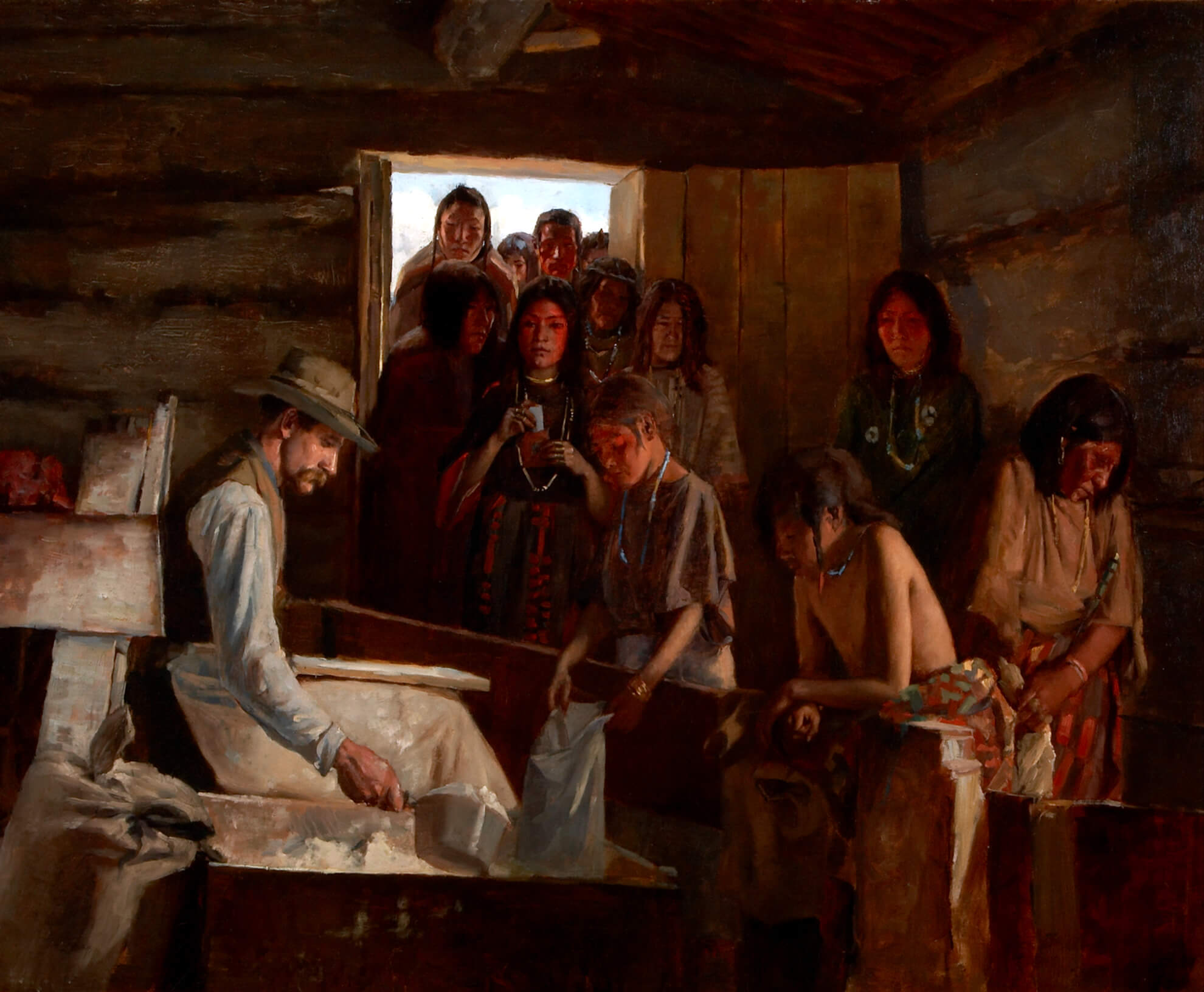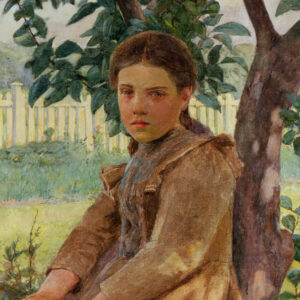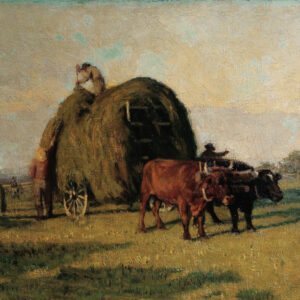Giving Out Rations to the Blackfoot Indians, NWT 1886

William Brymner, Giving Out Rations to the Blackfoot Indians, NWT, 1886
Oil on canvas, 66 x 81.3 cm
Art Gallery of Hamilton
Giving Out Rations to the Blackfoot Indians, NWT depicts people of the Siksika Nation lining up to receive flour rations from the Canadian government. Brymner created this work while visiting the Siksika Nation Reserve near Gleichen (now in Alberta) in 1886. Although he is known to have worked on other paintings during his visit, only this one can be conclusively traced. Unlike many other nineteenth-century paintings that depict Indigenous people, such as Six Black Feet Chiefs, Blackfoot, c.1849–55, by Paul Kane (1810–1871), Brymner’s work is not an image that purports to represent traditional culture. The painting is not detailed but it is evident that the people in it are wearing ordinary clothing, rather than ceremonial dress, and minimal jewellery. Their expressions are sombre and viewers are asked to grasp the gravity of the situation. It is an image about a desperate need for food.

Food rations were among the promises of Treaty 7, an 1877 agreement between Canada and several First Nations, including the Siksika Nation. By 1886 the practice of distributing provisions had become controversial: the federal government had been accused of excessive spending and also of sending food unfit to eat. Others criticized the government on moral grounds: when rations were withheld with the intention of forcing Indigenous people onto reserves, one member of parliament accused the government of “a most unwise and inhuman policy.” Brymner would have been aware of the political significance of the scene he was painting, as Canadian newspapers frequently reported on the federal government’s handling of these rations.
Brymner would have witnessed severe hunger during his visit to the Siksika Nation Reserve as the local Indian agent was limiting rations in an effort to reduce costs. In a speech made in July 1886, the Siksika leader, Isapo-Muxika (then called Crowfoot in the Canadian media), spoke of the inadequacy of the rations and the risks of starvation, declaring that “he and his chiefs feared for their children, that food would not be given them.” Brymner had met Isapo-Muxika only weeks earlier.
Brymner’s letters to his father recount his experiences on the reserve. On May 12, he wrote, “I saw them give out the rations for 4 days (1¼ lb. of meat per head per day and ½ lb. of flour I think) The sight was comical. These Indians are real painted Savages.” The language is clearly racist, though it should be noted that during the late 1800s the word “comical” sometimes meant “strange,” as opposed to “funny,” and this is likely what Brymner meant. In another letter, he noted, “I’m painting a picture of the Indians being rationed and I wont [sic] leave until it is finished. Of course I have been at other things too, but that is the most important.” Today it is unclear to what other projects Brymner was referring. While working on the reserve, he paid Indigenous people to pose for him, but he did not record their names.
This painting is a world apart from A Wreath of Flowers, 1884, with its radically different subject and a style much closer to realism. Brymner’s motivations for the work are unknown, though he certainly understood the politics of his subject. Today the work is an important reminder of terrible colonial betrayal and the Canadian government’s use of famine as a weapon to enforce the assimilation of Indigenous peoples.

 About the Author
About the Author
 More Online Art Books
More Online Art Books
 Acknowledgements
Acknowledgements